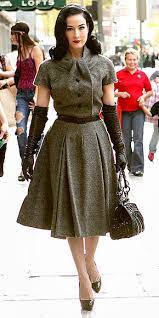|
Antiques, I love them any time. Today the fashion industry is confusing. It's bright vs. antique. You have to decide which look you prefer more. Yes of course you cannot wear antique cloths but it's definitely being preserved. It has its own value. Here specifically let's talk about the vintage fabrics care. As there are to be treated as monuments the care is identical.
Whether your decorating style is quirky, eclectic, classic, traditional, bohemian, minimalist, or organic; antique textiles lend a note of individuality and create a feeling of warmth.
Vintage fabrics transcend fashion trends and incorporate history into the home design. Antique table lines, curtains, lace, cushions, and quilts, when used properly, create an ambiance by giving a room a unique quality. As interior decorators add an authentic note to a room with architectural salvage, you can display vintage fabrics and antique textiles to personalize your home decorating style.
Storage of Vintage Textiles
When not in use, store antique fabrics carefully, Never keep them in the basement where humidity can cause mildew.
- Store old textiles in a dark place that is not subject to temperature extremes (like an attic crawlspace)
- Roll, do not fold old fabric. Folding puts wears and strain on the fibers and may weaken them.
- Store old dresses or blouses by hanging on a padded hanger.
- Wrap delicate fabrics in acid free tissue paper, roll, and store
- Or wrap in unbleached muslin. You can create a sling of muslin if you want to keep an old piece of material in a card board box or wooden drawer. (See film below)
- Do not allow antique textiles to come into contact with wood. If storing vintage fabrics in a cedar chest, or press closet, line shelves with paper or wrap fabric in acid free tissue paper.
- Do not store in plastic bags or boxes. Old textiles will last longer with some air circulation
- Storing old fabrics in a cardboard box is okay if your wrap fabric in acid free tissue or muslin, or if the box is made of acid free cardboard
- Add a dried lavender sachet (you can make a lavender sachet from an old scrap of fabric). Lavender is a natural insect repellent. Plus it will make your antique textiles smell great! Besides, that's how they stored fabrics in the old days!
Washing Vintage Fabric
If you need to clean a very old piece, it may be best to take it to a restoration or antique textile expert. You can find advice by calling your local museum or contacting a museum that features an antique textile collection.
- Do not wash old fabrics in a machine or put them in the dryer
- Gentle hand washing is best for old fabrics
- Avoid harsh chemicals, detergents, and bleach when laundering antique or vintage textiles
- Use soap flakes or gentle cleaners like Dreft or Woolite.
- Stained table linens can be cleaned by soaking in cold water for some time.
- Squeeze lemon juice onto a stain and set the fabric out in the sun to remove stains on white linens.
- After washing, place the fabric between 2 towels. Gently roll and squeeze. Do not wring.
- Dry flat
- If you must iron old fabric, use a pressing cloth between the iron and the vintage textile.
|
 |
Follow the above to well preserve you assets. The fashion cycle always rotates. We never know what will come back.
Posted January 19, 2012
|







